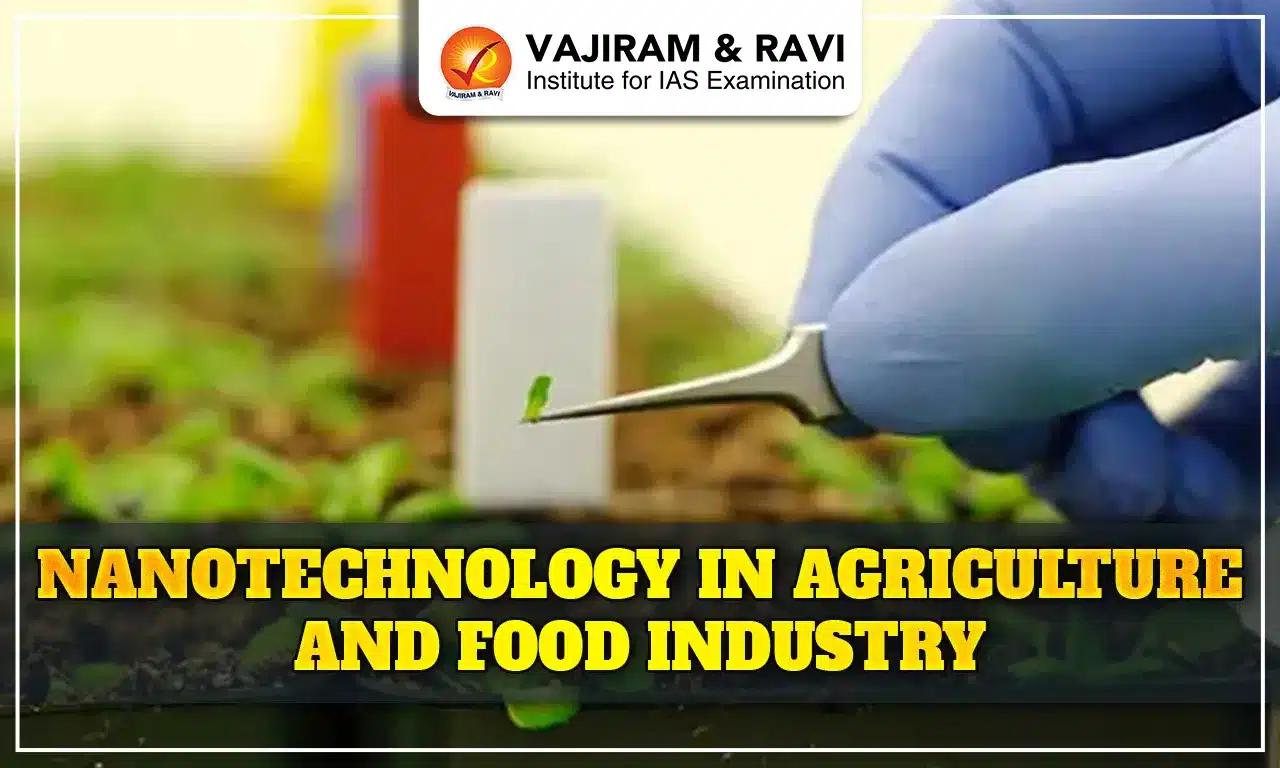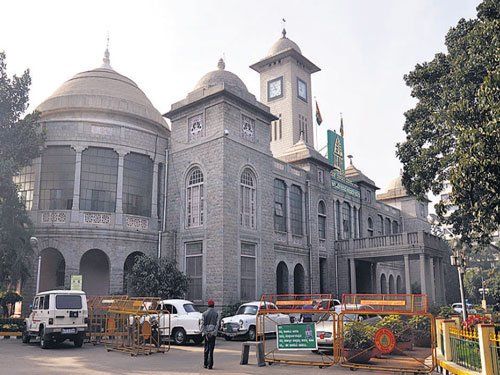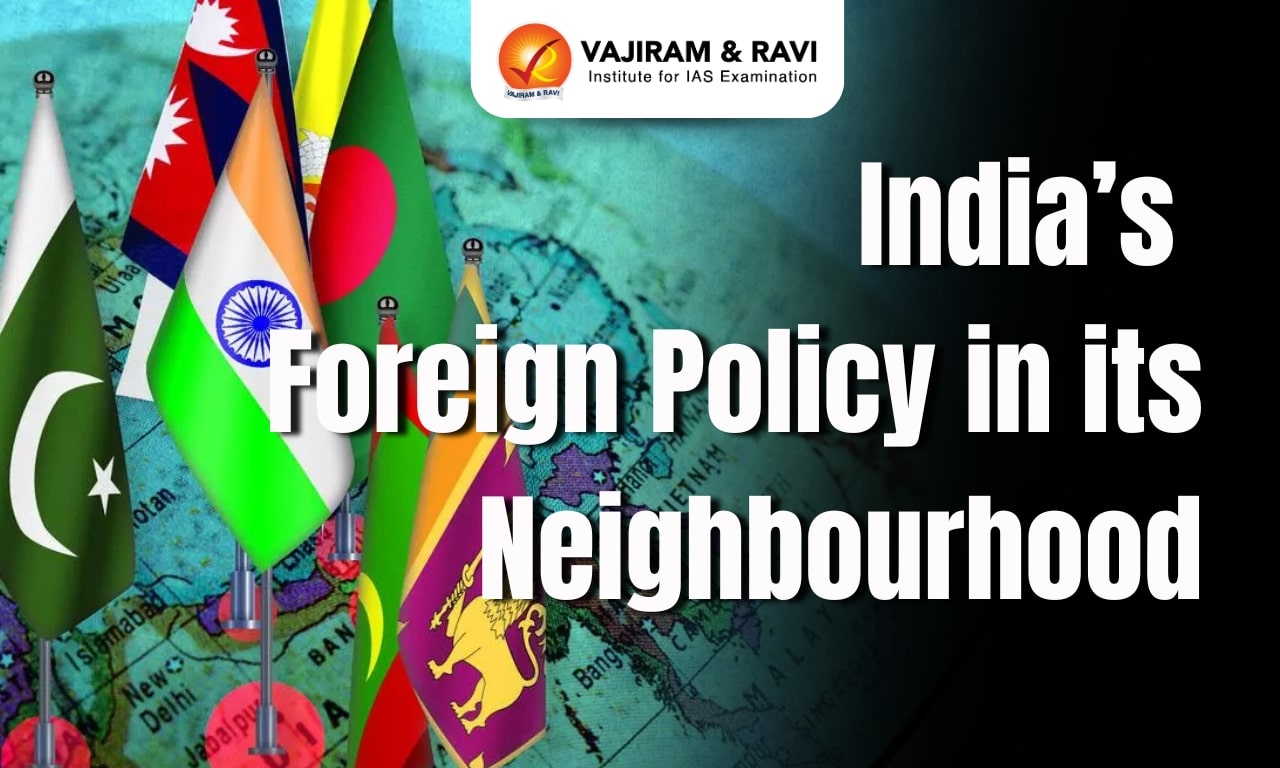Nanotechnology is emerging as a promising tool for advancement in agriculture. Nanomaterials, with at least one dimension of 100 nanometers or less, have unique optical, magnetic, electrical, and mechanical properties. Their high surface area-to-volume ratio also makes them highly reactive.
The use of Nanotechnology in agriculture enables efficient disease detection and management, precision farming through nano-sensors, enhanced productivity through nano-fertilizers and pesticides, and improved food quality and safety through innovative packaging materials. Hence, the use of nanotechnology in agriculture is significant in order to meet the changing needs and domains of providing food to the growing population of the world.
Applications of Nanotechnology in Agriculture
In agriculture and food systems, nanotechnology has emerged as a powerful set of tools that allows enhanced productivity, disease/pest resistance, nutrient absorption, and food safety. Major applications of nanotechnology across the crop production value chain include:
- Nano fertilizers: Conventional fertilizers have low nutrient use efficiency as the majority of applied nutrients are wasted and cause environmental pollution.
- Nano-encapsulated fertilizers control the release rate of nutrients that match the crop's needs over time.
- Slow and steady nutrient delivery reduces losses. Nanocarriers also protect nutrients from soil immobilisation.
- Nano pesticides: Nanoscale pesticide formulations enhance solubility, dispersion, target-specific delivery and efficiency compared to conventional pesticides.
- Nanocapsules, nanogels, and emulsions allow the slow and sustained release of active ingredients.
- Lower doses are effective and toxicity is reduced.
- Nanocapsules, nanogels, and emulsions allow the slow and sustained release of active ingredients.
- Nano-sensors: Miniaturised optical, electrochemical and magnetic nano-sensors monitor soil quality, crop growth environment, plant pathogens, moisture levels etc. in real-time.
- Farmers can take quick action and move towards precision agriculture with the help of networked nano-sensors.
- Smart delivery systems: Nano-porous zeolites, carbon nanotubes, cellulose nanofibers etc. act as smart carrier systems for controlled and targeted delivery of genes, DNA, growth hormones, herbicides and other agrochemicals to plants, this improves efficiency.
- Anti-microbial Nano-coating: Silver nanoparticles applied as coatings on greenhouse glass, plastic films, and irrigation pipes prevent microbial buildup.
- This avoids decay and enhances the durability of farming infrastructure.
- Water purification: Magnetic nanoparticles, carbon nanotubes and nano filters enable rapid decontamination of water from pesticides, fertilizers, pathogens etc. which is then safely reused for irrigation.
- Plant disease diagnostics: Nano barcodes and nanoprobes coated with antibodies detect plant pathogens like bacteria and viruses quickly and accurately compared to conventional techniques.
- Rapid diagnostics facilitate early disease prevention.
- Seed germination: Nano priming of seeds with zinc, titanium dioxide, and silica nanoparticles speeds up germination rates and plant growth by penetrating the thick seed coat and enhancing enzyme metabolism.
- Food packaging: Nanocomposite films with nano clays and cellulose nanofibers improve mechanical strength, barrier properties, heat resistance and biodegradability of food packaging compared to conventional polymer packaging.
- Crop protection: Silica nanoparticles applied on leaves shield the plants from high temperatures and strong UV radiation.
- Nano-coatings on fruits restrict oxygen and moisture penetration to delay ripening and prevent spoilage during storage.

Nanotechnology Applications in Food Processing
Nanotechnology promises to become a major driver of innovation in agriculture, food processing, and packaging. Nanotechnology is enabling revolutionary changes across the food manufacturing value chain:
- Encapsulation and delivery: Nano-encapsulation of nutrients like vitamins, minerals, antioxidants and flavours in the food matrix through techniques like nanoemulsions, nanoliposomes, bilayer vesicles, etc. improves their stability and controlled delivery in food products.
- Food safety: Nanosilver particles incorporated into food containers and packaging films provide antimicrobial protection and avoid contamination.
- Magnetic nanoparticles bind and detect pathogens like Salmonella and E. coli in food samples within minutes for quality checks.
- Product development: Nanoscale self-assembled structures of lipids, proteins and polymers can mimic food properties like texture, taste, and appearance.
- This enables the design of low-fat or fat-free food formulations.
- Enzyme Immobilization: Fixing enzymes over nanomaterials like silicate nanoparticles retains their activity and reusability during the synthesis of sugar syrups, organic acids, and amino acids used in food processing.
- Nanomagnets can retrieve immobilised enzymes.
- Nutrient absorption: Reducing nutrients like vitamins, minerals and supplements into nanoforms enhances their bioavailability, solubility and absorption in the body.
- Nanoencapsulation also improves flavour.
- Packaging: Oxygen scavenging nanopackaging absorbs oxygen to prevent spoilage of food items.
- Nanosensors integrated packaging detects food contamination and shows changes through colour or fluorescence.
- Processing equipment: Nanofilters remove microscopic contaminants during the processing of wine, beer, and fruit juices.
- Nanocoatings minimise bacterial adhesion on machines and prevent corrosion.
- Food Nano-sensors: Low-cost printed nanosensor arrays based on gold and silicon nanoparticles change colour to detect gases released during food decomposition.
- Portable nanosensor kits identify contaminants and allergens.
- Cleansing agents: Silver nanoparticles exhibit strong antibacterial activity against foodborne pathogens like E. coli, Listeria, and Salmonella.
- Coatings and nanosprays keep processing equipment sterilised.
- Smart packaging: Nanosensors and RFID nanotags integrated into packaging detect gases released by spoiling foods like meat, fish, etc. and communicate through colour-changing indicators; this improves food shelf-life.

Meat Processing
| Application | Nanomaterials used | Purpose |
| Antimicrobial coatings | Silver, magnesium oxide, and chitosan nanoparticles | Reduce biofilm formation |
| Smart packaging | Palladium nanoparticles | Sense spoilage gases |
| Meat tenderization | Enzyme nanoparticles | Catalyze protein breakdown |
| Time-temperature sensors | Nanoparticles dispersed in edible films | Monitor product freshness |
Bakery Products
| Application | Nanomaterials used | Purpose |
| Nutrient delivery | Chitosan, soy protein, PLGA nanoparticles | Prevent degradation during processing |
| Fat replacers | Nanocellulose, nanoclays | Reduce fat content in cakes, pastries etc. |
| Antimicrobial packaging | Silver nanoparticles | Prevent microbial spoilage |
| Dough conditioning | Zinc oxide nanoparticles | Improve handling properties |
Horticulture
| Application | Nanomaterials used | Purpose |
| Coatings | Aloe vera nanofibers | Reduce moisture loss |
| Antibrowning agents | Nanocapsules with antioxidants | Prevent enzymatic browning |
| Condition monitoring | Nanosensors | Detect temperature changes |
| Smart packaging | Polymer nanocomposites | Control gas exchange |
Beverages
| Application | Nanomaterials used | Purpose |
| Water treatment | Silver nanoparticles | Disinfect drinking water |
| Toxin detection | Gold nanoparticles | Sense contaminants in beverages |
| Gas barrier | Carbon nanotubes | Prevent oxidation in beer bottles |
| Packaging material | Nanoclays | Enhance barrier and strength |
Key Challenges of Nanotechnology in Agriculture
While offering tremendous benefits, some key challenges currently inhibit the large-scale adoption of nanotech in agriculture:
- Toxicity concerns: The impacts of nanomaterials on soil quality, microbial activity and human health require more evaluation through life cycle analyses and can also trigger the production of free radicals.
- Nanomaterials reaching the land have the potential to contaminate soil and migrate into surface and ground waters.
- High costs: The R&D and specialised manufacturing systems required to engineer nanoproducts make initial investment prohibitive for small companies.
- Scalability: A large variety of nanomaterials are still only being produced in lab quantities. Methods for controlled, scalable synthesis with reliable properties have to improve.
- Regulations: Regulatory uncertainty due to lack of standardised safety data and nano-specific regulations deters commercialisation.
- International harmonisation of regulations would help.
- Lack of awareness: Understanding of nanotechnology remains low among farmers. Effective communication regarding costs versus benefits for different applications is needed.
- Skill shortage: There is limited interdisciplinary expertise combining domains like nanoscience, agriculture, and food technology. Capacity building is required.
Government Initiatives on Nanotechnology in Agriculture
Realising the potential of nanotechnology, India has established dedicated nanotechnology programs and research centres:
- Nano Mission: Launched nanotechnology research centres like the Centre for Nano Science and Engineering (CeNSE) at IISc Bangalore, which works on nano-fertilizers and nanotech food packaging.
- ICAR Initiatives: The Indian Council for Agriculture Research established Nanotechnology Centres at IARI and IVRI to develop nano-biosensors, nano-pesticides, and nanocapsules for nutrient delivery.
- IFFCO placed India first in the world in Nano Urea and Nano DAP production.
- Nano Urea is sprayed not on the ground but on the plants, which leads to a zero possibility of destruction of natural elements or earthworms present in the soil.
- Nano-fertilizers: IARI developed nanoparticles of zinc, chitosan, and silica as nano-fertilizers for improving crop growth and yield.
- Nano-sensors: ICAR funded the development of nano biosensors at IIT Kharagpur for detecting pesticide residues in food.
- Nano-pesticides:Tamil Nadu Agriculture University synthesised nanoparticles of herbal extracts as an eco-friendly, non-toxic nano-pesticide.
- Toxicity evaluation: Karumanchi University assessed the impacts of nano-scale zinc oxide on soil microbial activity.
- International collaboration: Indo-UK project between the University of Birmingham and IIT Delhi on nano-sensors to monitor soil and crop health.
Way forward
Nanotechnology has exciting potential to enhance agriculture and the entire food value chain. Here are some future possibilities:
- Multifunctional nanosystems: These systems can simultaneously improve crop yield, damage resistance, water efficiency, and fertilizer utilisation.
- Large-scale networks of nanosensors: These networks will provide real-time monitoring of soil, plant health and food quality across the supply chain.
- Smart nano-pesticides and nutrients are responsive to plant biochemistry for precise dosing and minimized toxicity.
- AI-guided automation will enable data-driven dynamic optimisation of nanomaterial dosages and applications.
- Edible nano-coatings: To allow self-cleaning and anti-browning effects to produce.
- Nano-enabled urban agriculture: Vertical farms, nano-greenhouses and hydroponics to maximize productivity.
- Nanotech-derived new functional ingredients: Like colourants, textures, flavours, and vitamins synthesized using nano processes.
- Active packaging with colour-changing nanosensors: To give visual spoilage alerts to consumers.
With benefits like increased crop yield, reduced waste, and sustainability, nanotechnology can play a pivotal role in shaping the future of agriculture in India.
Last updated on December, 2025
→ Check out the latest UPSC Syllabus 2026 here.
→ Join Vajiram & Ravi’s Interview Guidance Programme for expert help to crack your final UPSC stage.
→ UPSC Mains Result 2025 is now out.
→ UPSC Notification 2026 is scheduled to be released on January 14, 2026.
→ UPSC Calendar 2026 is released on 15th May, 2025.
→ The UPSC Vacancy 2025 were released 1129, out of which 979 were for UPSC CSE and remaining 150 are for UPSC IFoS.
→ UPSC Prelims 2026 will be conducted on 24th May, 2026 & UPSC Mains 2026 will be conducted on 21st August 2026.
→ The UPSC Selection Process is of 3 stages-Prelims, Mains and Interview.
→ UPSC Result 2024 is released with latest UPSC Marksheet 2024. Check Now!
→ UPSC Prelims Result 2025 is out now for the CSE held on 25 May 2025.
→ UPSC Toppers List 2024 is released now. Shakti Dubey is UPSC AIR 1 2024 Topper.
→ UPSC Prelims Question Paper 2025 and Unofficial Prelims Answer Key 2025 are available now.
→ UPSC Mains Question Paper 2025 is out for Essay, GS 1, 2, 3 & GS 4.
→ UPSC Mains Indian Language Question Paper 2025 is now out.
→ UPSC Mains Optional Question Paper 2025 is now out.
→ Also check Best IAS Coaching in Delhi
Nanotechnology in Agriculture FAQs
Q1. How can Nanotechnology improve crop production?+
Q2. How are Nanopesticides better than traditional ones?+
Q3. What role do Nanomaterials play in plant breeding?+
Q4. How can Nanotechnology improve food safety?+
Q5. Are there any concerns regarding Nanotechnology in Agriculture?Are there any concerns regarding Nanotechnology in Agriculture?+
Tags: applications of nanotechnology in agriculture and food industry quest

















